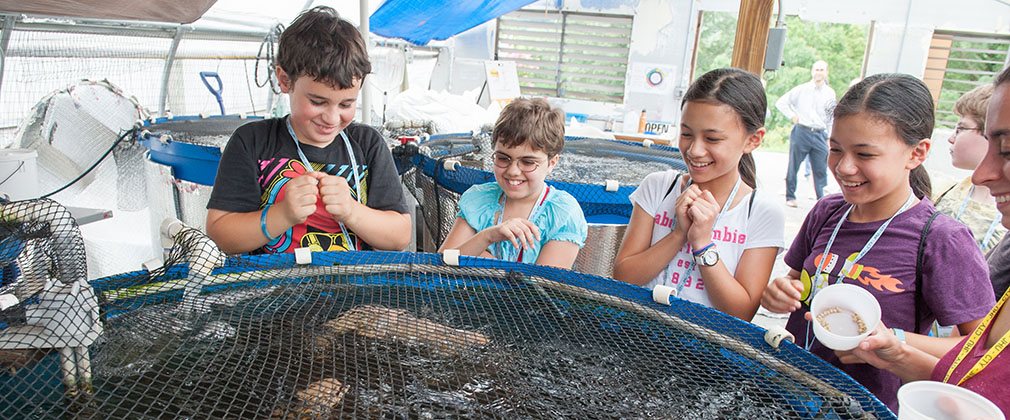Exploring the Food System with CTY
Two weeks ago we hosted our second annual Food Systems and Public Health course in partnership with the Johns Hopkins Center for Talented Youth (CTY) at the Cylburn Arboretum. Six CLF staff members spent the day with 15 talented middle- and high-school students and their parents, and worked to define the food system, acknowledge harms, and develop a sense of hope for changing the world through the way we grow and eat our food.
The day began with a dissection of the U.S. food system and a somewhat gloomy discussion of the implications of each step in the food chain. We witnessed scenes of the industrial food system in the film Out to Pasture, and explored various tactics food marketers use to sell us sugary, fatty food under the guise of proper nutrition. Fortunately, we also discussed alternatives, saw scenes of bucolic small farms, and spent time touring the CLF Aquaponics Project where fish and plants are grown side-by-side.
For me, the highlight of the day was working with students at the Aquaponics Project. We’ve hosted hundreds of students at the CLF Aquaponics project over the last two years, and I never tire of sharing with them a growing awareness of the possibility of regenerative forms of agriculture to bring about positive change. Plants grow in water? Yes! Fish waste can be used as fertilizer? Yes! And the system doesn’t generate any waste? Waste doesn’t exist in nature, why would it exist here? But, we also examine the disadvantages of the aquaponics system: the fish-food inputs, energy use, and the difficulty in achieving commercial viability. We hope that through a discussion of advantages and disadvantages we can inspire young minds to think both critically and creatively in developing solutions.
When we asked students to cite three things they learned during the day, they referenced everything from the dangers of industrial animal farming to the importance of not accepting food labels at face value. One 10-year-old student summed up the day eloquently by saying, “there are ways to use life instead of pesticides.” While this student may have been referencing the use of biological control to combat pests in the aquaponics project, the statement serves as a broader metaphor for agricultural systems: we can work with ecological cycles and the natural cooperation between plants and animals to eliminate the production of waste and industrial inputs to produce food in a way that protects the environment while promoting human health.
